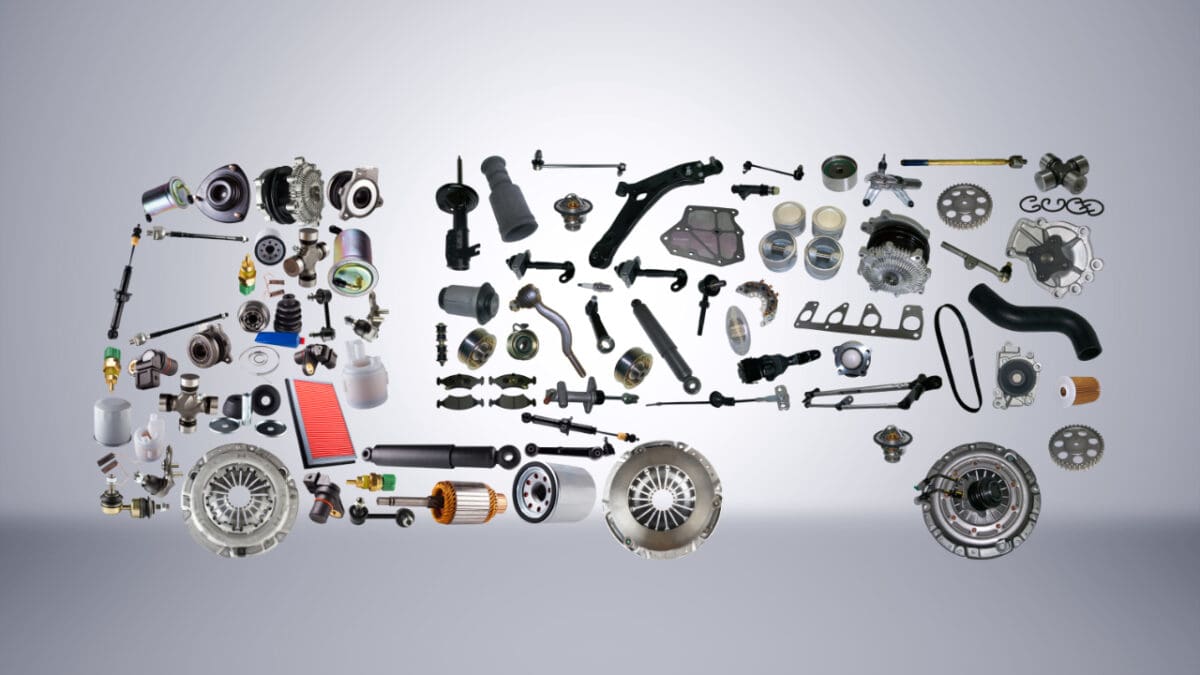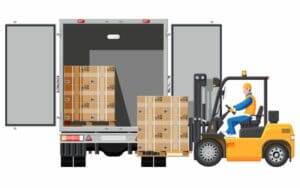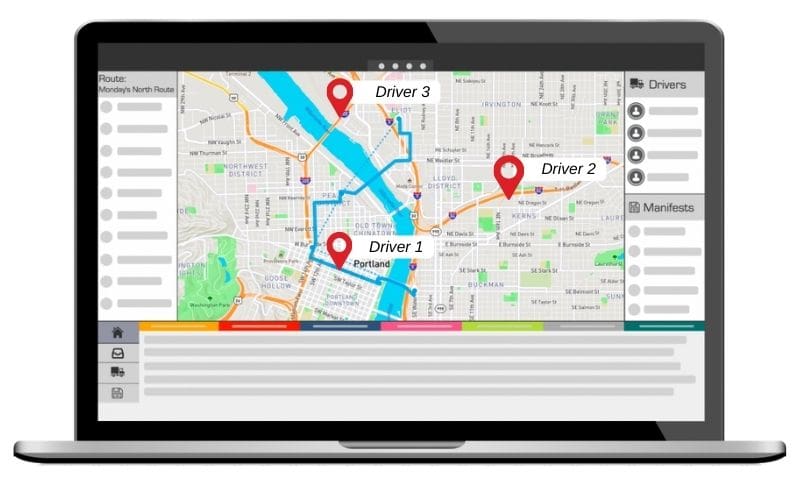
The auto industry hinges on the prompt and accurate delivery of auto parts. Mechanics, custom modders, and private car owners all are deeply invested in the quality of their parts delivery service. If you are in the business of delivering auto parts, you can make a respectable profit by building a service that your clients can rely on. Many will become long-term business partners with both regular and special orders because your service is integral to their service.
Of course, there’s a reason that auto parts delivery is a specialty niche in the logistics sector; it takes more than a few boxes and trucks to get the job done right. Running a top-notch delivery service for auto parts means expert packing, rapid deliveries, a high degree of transparency, and absolute order accuracy. These qualities are what will make any company delivering auto parts stand out and win the loyalty of automotive clients across the country.
At Elite EXTRA, we have worked closely with auto parts delivery businesses to help turbo-charge warehouse operations, fleet performance, and overall customer satisfaction. We can help you today by spotlighting the top five most useful tips to power up an auto parts delivery business.
1. Optimize Route Planning
The first step is to streamline the way you plan your delivery routes. An efficient route can drastically reduce the amount of time your trucks are on the road and speed up delivery estimates for your customers. If you provide same-day parts delivery, routes are even more important to ensure your customers get their auto parts within deadlines that are often both urgent and demanding.
There are three critical factors to consider when building a route for auto parts delivery: effectively navigating local traffic, the load-in/load-out order for larger parts loaded into the truck, and ensuring a practical customer order for multi-delivery trips.
Use Advanced Route Optimization Tools
Routing has come a long way from the paper map on the wall. Today, your map is a satellite-backed image of the region and the colorful pins have become live icons of your real-time fleet. Route planning tools have also advanced to provide intuitive optimization based on your priorities. Choosing the right software can help you automatically build routes based on the day’s deliveries, favoring or avoiding certain roads, arranging customer locations in the most practical order, and even have your drivers swing by a good place to stop for gas and lunch mid-day.
These tools can ensure that your parts get to the client on the correct day in their preferred delivery window while also considering the best route decisions for your drivers.

Prioritize Routes Based on Traffic Patterns and Delivery Locations
Everyone knows that some roads and traffic areas are better than others for completing deliveries. Some roads move more swiftly and connect smoothly from one artery to the next. If you can navigate these ideal traffic routes, your drivers will make better time, complete deliveries faster, and have a better experience behind the wheel.
Using the right software, you can then plan routes by arranging delivery locations in an order that naturally connects these ideal arteries for fast, efficient routing every time.
Avoid High-Risk Route Areas
Using route planning and geofencing, you can automatically avoid roads and neighborhoods that are bad for delivery routes. Slow speed limits, choppy stoplights, stop-and-go sections of the freeway, or broken road pavement all reduce your delivery speeds and frustrate your drivers. Some areas may actually be dangerous to route through. Use the software tools at your disposal to ensure your auto parts are never routed through these roads and areas.
Prepare to Adapt Quickly if Route Conditions Change
The road isn’t always the same every day. Bad weather, gravel spills, accidents, and local construction can alter good and bad conditions for your delivery routes. To ensure your auto parts are delivered smoothly and on time, be ready to adapt. Choosing the right route optimization tool can help you in times like these as they can adapt quickly and reroute in real time.
2. Streamline the Loading and Unloading Process
When it comes to auto parts, loading and unloading play an important role. These parts are often large, heavy, delicate, or some combination of the three.
Accuracy is also paramount. Your clients will often order parts delivery from you because you have the specific part they need in stock and can deliver it fast. You need a standardized and reliable procedure to select the right part, package it safely, then load and unload it efficiently to minimize your total handling time and meet your delivery windows.
The best way to do this is to streamline the process, ensuring that both loading and unloading are done with minimum time and maximum precision.
Organize Auto Parts for Quick and Efficient Loading

Keep your warehouse or parts storage facilities extremely well organized. Whether you pick up parts from partners or maintain a warehouse of auto parts to deliver, organization is key to a quick and efficient loading process.
Make sure every part is clearly labeled, along with the extra bolts and seals that each part is packaged with. Create your own labels if the manufacturer labels are not fast and clear enough to read at a glance. You can also equip your team with scanners to quickly check, identify, and confirm their parts selection.
Formalize Your Parts Packaging Procedures
Make sure your auto parts are packaged to perfection. Every part has a different way it can be damaged in transit, and it’s your job to prevent all of them. Body components can dent, glass components can shatter, and engine components might even leak. Each is a unique shape, weight, and delicacy. To handle this flawlessly no matter who is doing the packing, standardize your packing procedure.
Provide guidelines and the ideal packing materials for each and every part you stock, including bubble wrap, double-boxes, cardboard supports, and even the occasional wooden crate for delivering very heavy engine parts that must be crated.
Optimize the Unloading Process for Each Client
Handling time matters. The time it takes you to unload a package is included in the delivery window. This means you can minimize handling time by optimizing your unloading process. Drivers who are quick in their routine to carefully confirm a package, remove it from the truck, and leave it where a client is ready to receive will build the reputation for delivering auto parts with reliability and speed.
Of course, every client is unique. Each auto body shop, manufacturer, and custom modder will have a different area where they want drivers to park, where they want parts unloaded, and perhaps a unique hand-off routine as they sign for the part. Be ready to optimize not just the process of getting parts off the truck, but also to adapt to the needs of each individual client upon receipt.
3. Outsource to Complete Additional Deliveries
You will know that your auto parts delivery service is thriving when you get more delivery requests than you have trucks and drivers. While this poses a logistical challenge, it is also a good kind of problem, one worthy of an adaptive solution.
Naturally, you don’t want to ask any of your clients to wait for the next day’s delivery route, and you don’t have to. Instead, you can outsource to local third-party delivery fleets in order to complete those additional deliveries.
Join a Third-Party Delivery Network
The first step is to join a delivery network made up of third-party fleets. Some route and inventory management platforms make it easy to identify and connect with other fleets in your area who are just as reliable, trustworthy, and highly trained as your own fleet. This is essential when your aim is to complete a growing number of high-value auto parts deliveries.

Leveraging Your Delivery Network for Faster Delivery Overflow
Once you’ve joined a delivery network, don’t hesitate to leverage them when needed. Working with third-party fleets and local delivery services, you can provide quicker deliveries without delays when you (and your clients) need them the most. Coordinate your fleet contacts to determine which services are ideal for each delivery and pair with drivers who are ready to take on your bonus routes.
4. Leverage Technology for Real-Time Tracking
One thing that both delivery managers and your clients will appreciate is real-time tracking. With current technology, there is no need to ever lose track of a vehicle or guess their location again. You can know where each delivery vehicle is located down to the second and the street corner. You can tell if they have pulled up to the right door on a busy block or how far out they are to a client given the timing of the traffic lights between their location and destination. And your clients can, too.
Update the Status with Every Stage
Even before your auto parts get on the truck, you can provide live and engaging tracking by updating the order status with every scan. When the part is picked and scanned, you can provide an update. When the package is packed and labeled, that label creates a new order status. When the package is prepared for loading and loaded onto the last-mile truck, this provides the final update before GPS takes over.
Implement GPS for Real-Time Monitoring

GPS tracking is an essential element of modern fleet management and delivery customer service, at the same time. GPS identifies the exact location of vehicles that carry a tracker and can transmit that location back to the core dispatch software.
Fleet managers can watch their entire fleet complete planned routes and even respond in real time to route and condition changes with perfect oversight. GPS monitoring can also be conveyed to each package inside each truck. Once auto parts are loaded up, they take on the GPS signal of the truck to which they are assigned so that both dispatch and clients can know exactly where each package is located.
Keep Customers Looped Into the Delivery Process
The best way to provide a stellar customer experience is by creating a dashboard where clients can stay in the loop. Automotive clients who are eager to receive their part will track delivery down to the minute, and will wait on bated breath as their part draws closer through the delivery route. Customers will not call to ask where their part is if they can see it’s on the freeway or around the corner, and they may be waiting in the parking lot to receive their part if they watch the truck icon pull up to their driveway in real time.
This kind of tracking provides both useful information and deep satisfaction for automotive businesses and custom builders who often order rapid parts delivery.
Implement Communication Between Customers and Deliveries
You can also ensure that communication is possible between customers and the delivery service. Using the right communication tools, you can enable customers to call dispatch or connect with their drivers when necessary to ensure a smooth delivery and ease worries if a part gets held up on the freeway a little longer than expected.
5. Streamline the Return Processes
Lastly, there’s no need to let returns slow you down. Returns are a normal part of delivery and retail services. Sometimes, a part won’t fit correctly, a client may change their mind, or damage in transit occurs. These are all normal factors that can be calculated for. Properly handling returns can increase customer satisfaction and generate long-term loyalty with your clients.
Make sure your returns process is just as efficient as your delivery process and your business delivering auto parts will thrive.
Establish Procedures for Handling Returns and Exchanges Smoothly
Start by establishing a clear set of procedures for handling returns and exchanges. The more returns you process into exchanges, the better. But even a return and refund is better than losing a client. Train your team to quickly and efficiently assess a return, process the return, re-stock the part, and quickly deliver an exchange part whenever possible.
Provide Clear Instructions for Customers on the Return Process
Make sure your customers know how to access and process their returns. Provide clear instructions on when returns are accepted, how to request returns, and how to receive an exchange instead of a refund when a slightly different or fully intact part is needed.
Your clients will appreciate a clear view of how to get returns and professionals will learn to work smoothly with your returns policy so that both your business and theirs are not slowed down by the occasional return or exchange.
Boost Inventory Management and Reduce Revenue Loss
Smoothly handling returns provides more than just customer satisfaction. A good returns policy can boost the quality of your inventory management and reduce revenue loss. Returns that become exchanges can save a sale, while efficient inspections and restocks will maintain better inventory orders and prevent stock-outs. It’s important to see every return as an opportunity.

The Right Software to Achieve Auto Parts Delivery Success
If you are running an auto parts delivery service, the right inventory and fleet management software can make a big difference in your efficiency and capacity for growth. Elite EXTRA is a comprehensive logistics platform that provides advanced features for every solution we have discussed today.
Whether you are looking to improve real-time visibility with customer dashboards, connect with third-party delivery partners to expand your fulfillment network, or want to streamline your returns process, we’ve got you covered.
Reach out to Elite EXTRA today to explore how our platform can turbo-charge your auto parts deliveries.







